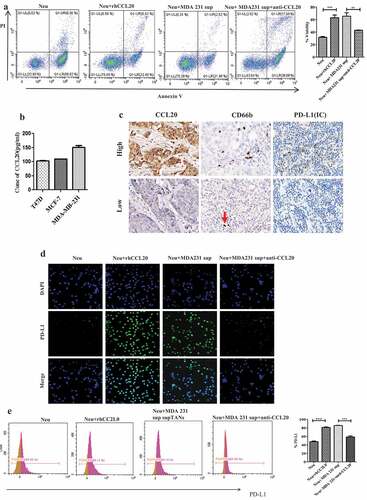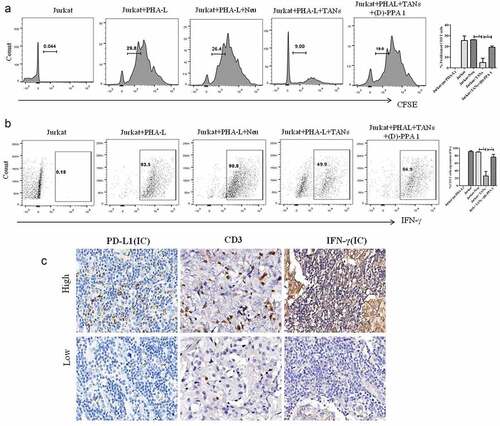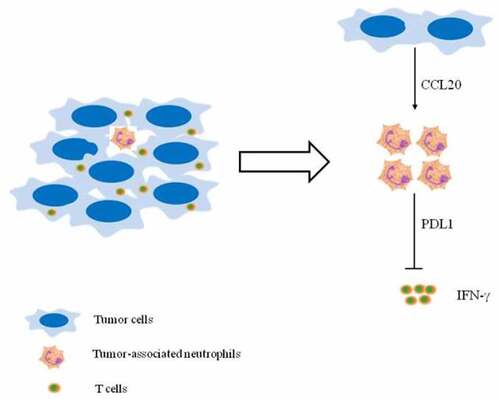Figures & data
Figure 1. Tumor-derived CCL20 activated and induced PD-L1 expression on neutrophils. (a) Viability of neutrophils treated with recombinant human CCL20 or supernatant from MDA231cell lines. (b) CCL20 expression as determined by ELISA in cell culture supernatant from breast cancer cell lines. (c) The expression of CCL20, CD66b and PD-L1 in breast cancer tissues (Immunohistochemistry, ×400). (d and e) PD-L1 expression on neutrophils cultured with rhCCL20 and MDA-MB-231 supernatant in the presence of CCL20 neutralizing antibody as determined by immunofluorescence and flow cytometry, respectively

Figure 2. TANs promote immunosuppression via PD-L1 in breast cancer. (a) Proliferation of CFSE-labeled T cells co-cultured with neutrophils (Neu) and TANs as examined by flow cytometry. (b) The production of IFN-γ from T cells co-cultured with Neu and TANs, as examined by flow cytometry. (c) The expression of PD-L1, CD3 and IFN-γ in breast cancer tissues (Immunohistochemistry, ×400)

Figure 3. CD66b+ neutrophils predict poor survival in breast cancer patients. (a) High density of CD66b predicts short disease-free survival in breast cancer patients. (b) ROC curve of the predictive value of CD66b . (c) Uni-Cox regression analyses of makers . (d) Multi-Cox regression analyses of markers


